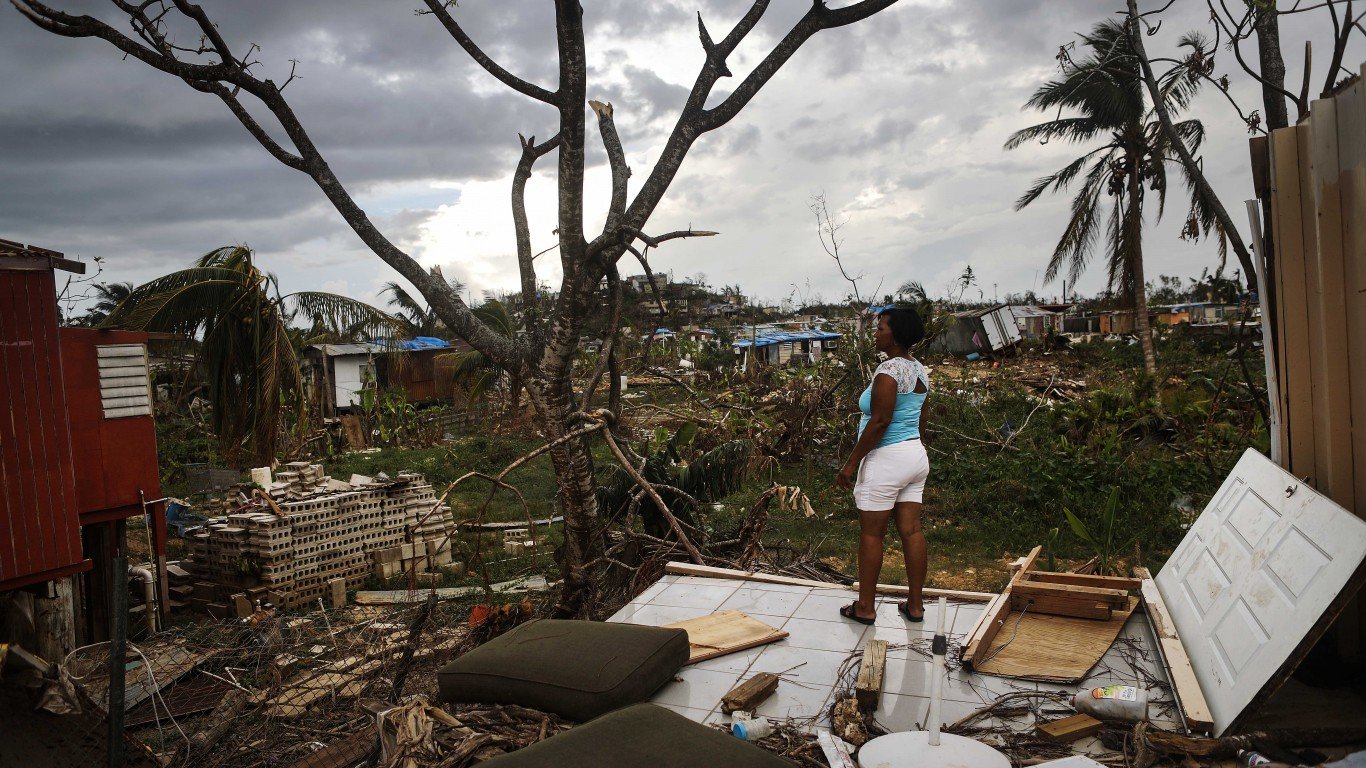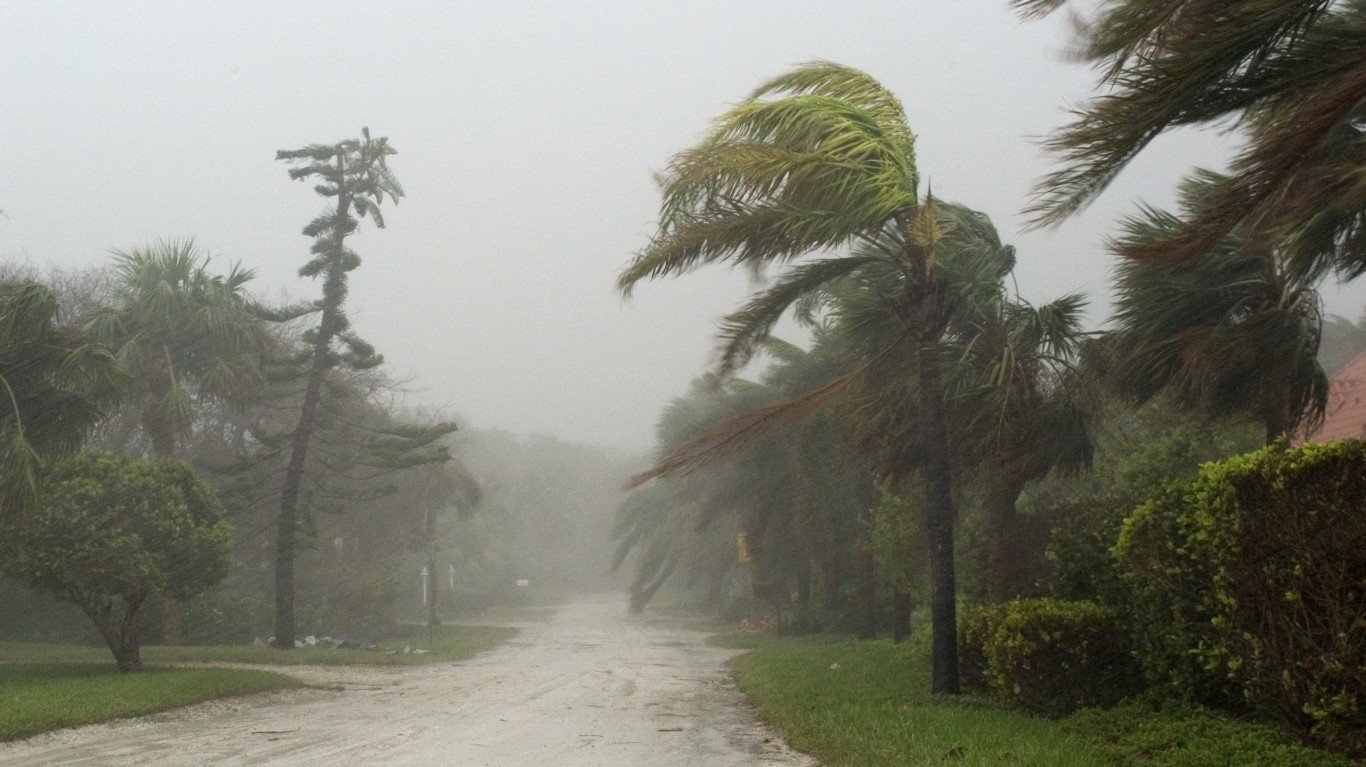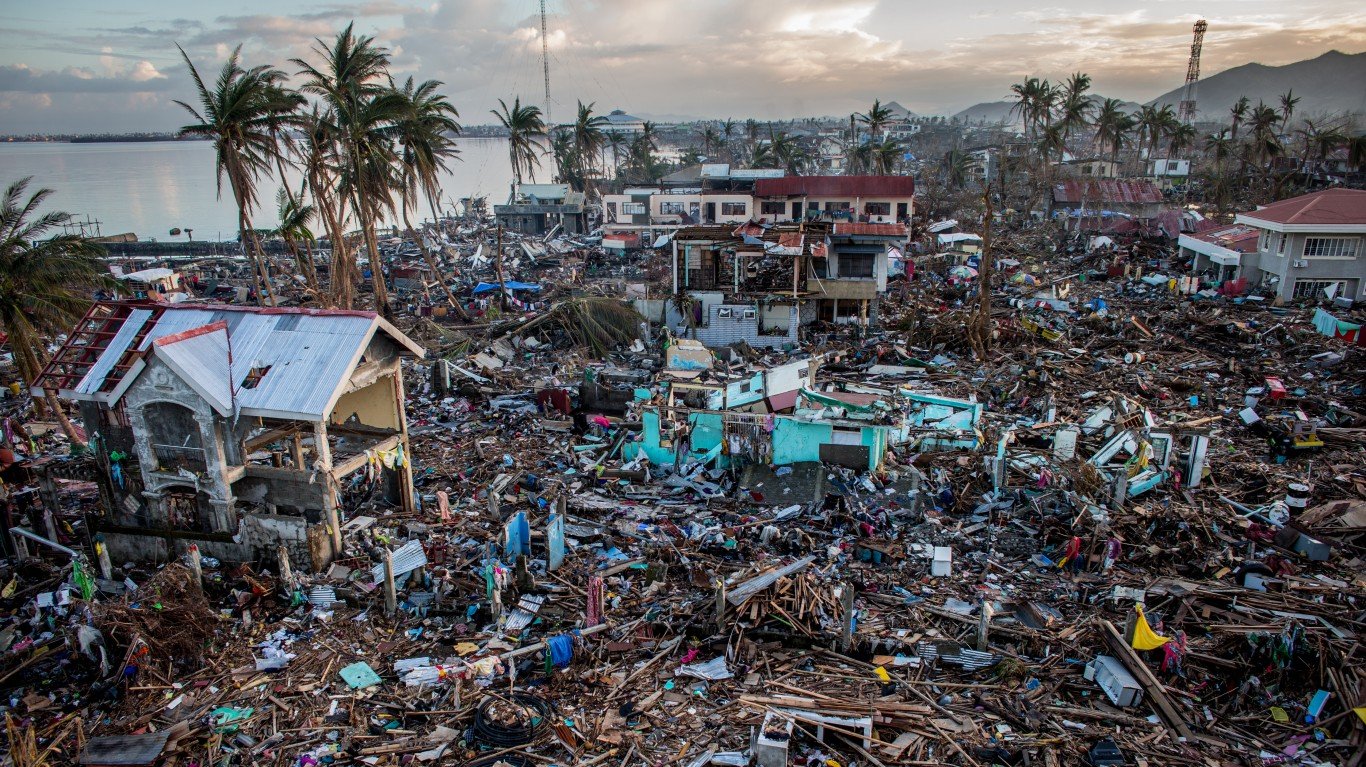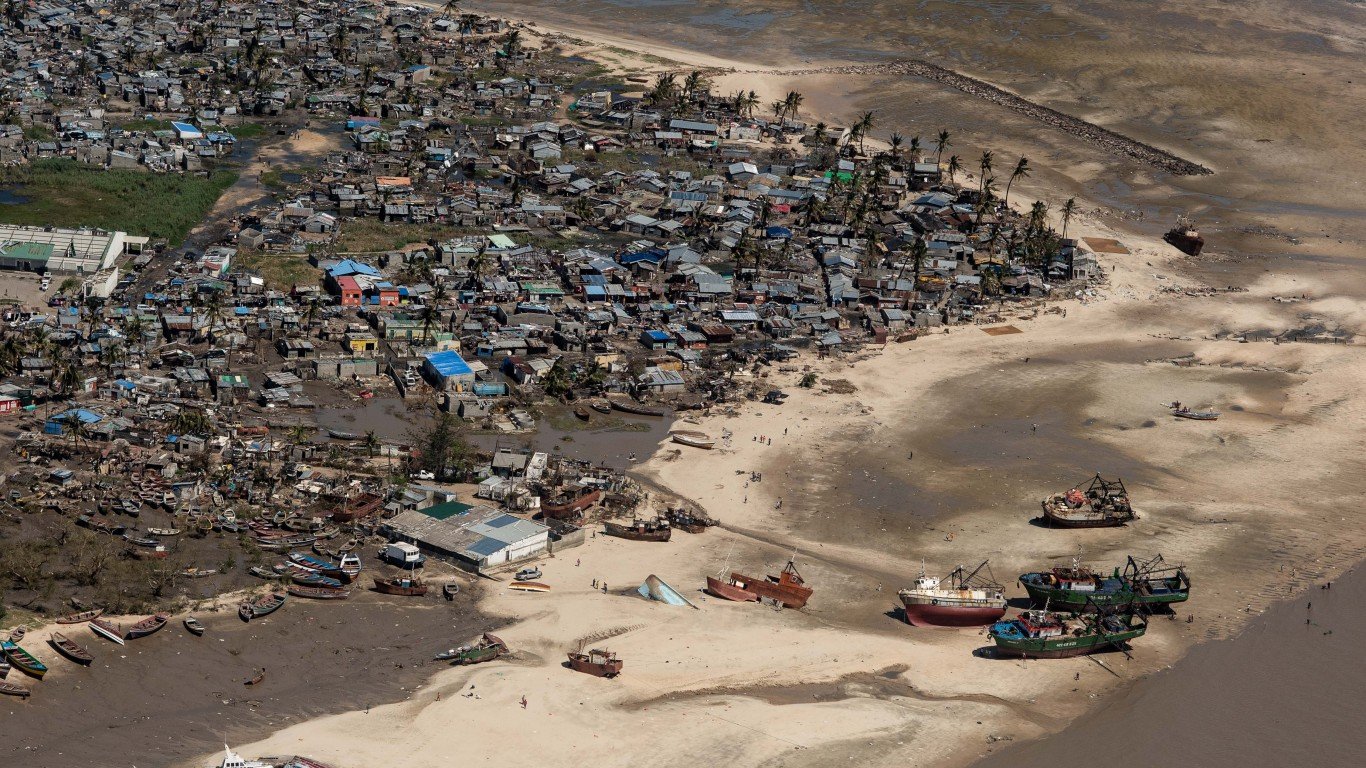
Puerto Rico
> 2020 CO2 emissions: 3.96 million metric tons
> Share of global emissions: 0.01%
> Population: 3,194,030
Puerto Rico is particularly subject to flooding and regularly suffers from persistent Caribbean and Atlantic storms, and these are becoming more frequent and disastrous. According to Germanwatch, Puerto Rico was the country most affected by climate change in the two decades between 1999 and 2018. By far, most of the damage wrought in that period – 98% – was caused by Hurricane Maria in 2017. Thousands of lives were lost and the Island incurred at least $90 billion in damages.

Myanmar
> 2020 CO2 emissions: 37.71 million metric tons
> Share of global emissions: 0.10%
> Population: 54,409,790
In the 20 years between 1999 and 2018, Myanmar was pummeled with 57 extreme weather events – cyclones, storm surges, extreme temperatures – costing $3 billion in direct damages and the loss of 141,129 lives. This does not include the high costs of the droughts resulting from extreme heat, the displacement caused by flooding, or other longer term, indirect impacts of extreme weather.

Haiti
> 2020 CO2 emissions: 3.01 million metric tons
> Share of global emissions: 0.01%
> Population: 11,402,530
In the past decades, Haiti’s temperature has risen and the rains have become less predictable and more damaging, even as storms have become more frequent and intense. Floods, droughts, and salt intrusion from storm surges are already affecting Haiti’s economy. Haiti is Latin America’s most vulnerable nation from a climate perspective, with its fragility made more so by historic deforestation and poverty.

Philippines
> 2020 CO2 emissions: 139.16 million metric tons
> Share of global emissions: 0.39%
> Population: 109,581,090
The Philippines is one of the countries most vulnerable to climate change due in large part to its long coastline, large floodplains, and Pacific location. In recent years, it has experienced erratic weather patterns and more damaging storms, causing deadly droughts, floods, and landslides. In December of 2021, a Category 5 typhoon, Rai, killed 400 people and destroyed or damaged 925,000 homes. Cleanup efforts are expected to take up to six months.

Mozambique
> 2020 CO2 emissions: 9.94 million metric tons
> Share of global emissions: 0.03%
> Population: 31,255,440
Mozambique is particularly vulnerable to cyclones and flooding, dangers that are increasing with climate change. Following two deadly cyclones in 2019, Idai and Kenneth, and with much of its damaged infrastructure still in need of repair, Mozambique was slammed again in early January of 2021 by yet another cyclone. Eloise destroyed 56,000 homes and undid much of the recovery work from the earlier storms.






